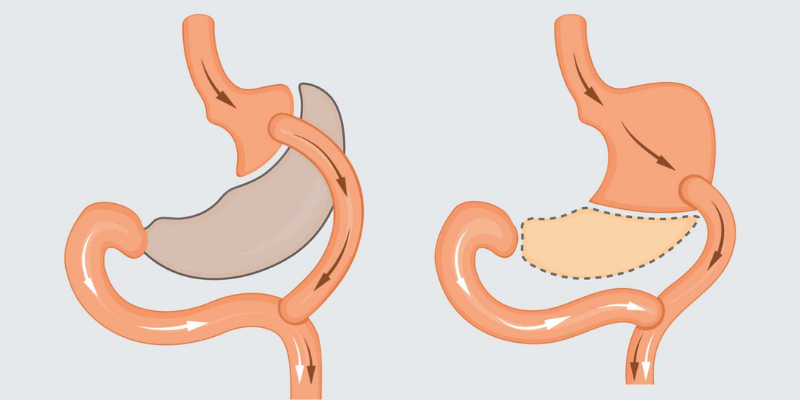How To Get Covered For Weightloss Surgery?
How to get covered for weightloss surgery? Although insurance frequently doesn’t cover it, your doctor might be able to get some of the expenses covered. Doctors frequently have the opportunity to lower costs through offers and tax benefits. Today, insurance plans typically cover gastric bands, laparoscopic gastric bypass, and gastric sleeve surgery for weight loss. In the past, the lap band procedure was viewed as experimental, and the majority of insurance providers declined to pay for it. The majority of insurance policies, including the majority of the large ones, do not cover its cost because the intragastric balloon is typically used for weight loss for aesthetic purposes rather than to treat the health issues associated with being overweight.
Insurance rarely covers the intragastric balloon procedure as a result. The patient is expected to pay the bill out of pocket. The majority of companies that sell gastric balloons offer affordable payment plans, making it easier to get the procedures. The cost of the gastric balloon can also be lowered by up to 30% if a potential patient pays cash for the procedure.
The type of equipment used, the standard of the clinic or hospital, and the standard of the surgeon all affect the price of a gastric balloon. The gastric balloon’s quality, brand, and life all change simultaneously. Like any other material, gastric balloons are available in a variety of designs, names, and brands. Private insurance has not offered coverage for the use of gastric balloons.
How To Get Covered For Weightloss Surgery With Insurance?
Only gastric balloon surgery will be covered by the government if certain requirements are met. According to these regulations, the state will only pay for stomach reduction surgery if the patient is obese and has a BMI of 40 or higher. For obese patients with a body mass index (BMI) under 40, insurance will not pay for the cost of stomach reduction surgery. If your BMI is less than 40 but not less than 35, you are obese, have high blood pressure, diabetes, or heart disease, and you also have any of these conditions, the state will pay for the majority of the cost of your stomach reduction surgery. On the other hand, the government has approved and will pay for any surgery done at a state hospital.
Some of these rules do not, however, apply to private hospitals. But some stomach reduction procedures might be covered by private insurance companies and other health plans, the number of which has recently risen. Only public hospitals are allowed to perform gastric reduction surgeries that are funded by the government. Although considered public hospitals, university research hospitals are governed by different laws.
How To Get Covered For Weightloss Surgery For Gastric Balloon?
A gastric balloon‘s cost varies depending on a number of variables. How much it will cost depends on the personality type of the patient who wants the surgery. The simplest way to lose weight is through gastric balloon surgery. During the gastric balloon procedure, an endoscope is used to enter the stomach, and a balloon that has been inflated with air or liquid is left there. This procedure made the stomach smaller, allowing patients to feel fuller faster with less food. The balloon was there, so the same techniques were used to remove it as people lost weight.
It would not be appropriate to talk about the price of a gastric balloon in terms of a single amount. How the application was made is one aspect that affects the price. On the other hand, since 2018, the price of a gastric balloon procedure has remained constant. Patients undergoing gastric balloon surgery are put to sleep using a light anesthetic. The goal of this anesthetic is to keep the patient from feeling any pain or discomfort throughout the procedure.
Weightloss Surgery Options Cost
Clinics must consider the gastric balloons’ price range. Be sure to follow the advice of the clinic’s doctors before starting the application. People who will have gastric balloon surgery are first instructed to fast for eight hours prior to the procedure. These people are eligible to apply after an eight-hour fast. In the pre-operative clinics, only vascular access was given to the patient because it was straightforward to do so. Through this vein, the patient was sedated prior to the procedure. Given how simple the procedure is, the patient only receives very mild sedatives.
As a result, the patient should have very few worries before surgery. This proportion will increase if they start exercising frequently in the lead-up to applying, as more people will be pleased with the outcomes.
The cost of the gastric balloon procedure and the amount of weight loss following this 10 minute procedure are still unknown. Patients who use the device after having gastric balloon surgery lose 4 kg on average each month. People who are overweight might find the thought of losing weight so quickly intriguing. Six to a year after the gastric balloon procedure, the balloon has left the stomach. When the timer goes off, the balloon deflates, giving the patient a warning to follow the diet or else weight loss will resume.


